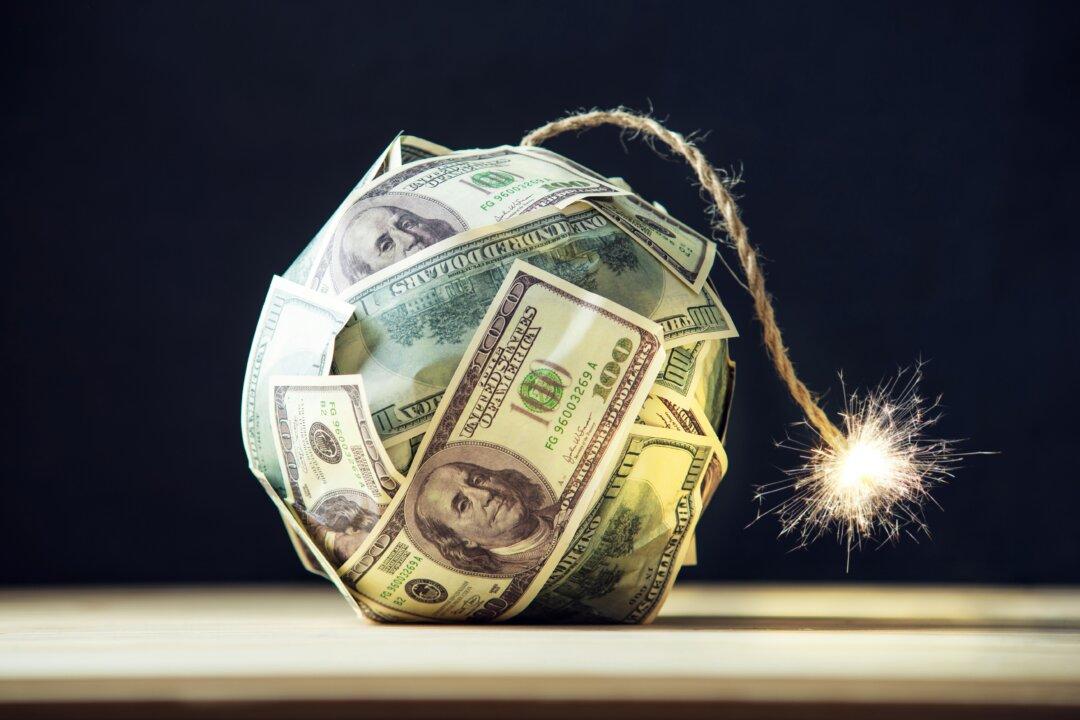- The Fed owns 12.4 percent of the U.S. total public debt.
- The ECB and BoJ balance sheets exceed 35 percent and 70 percent of GDP.
- The BoJ is now a top 10 shareholder in 90 percent of the Nikkei.
- The ECB owns 9.2 percent of the European corporate bond market and more than 10 percent of the main European countries’ total sovereign debt.
- The Bank of England owns between 25 percent and 30 percent of the UK’s sovereign debt.
- The Swiss National Bank owns $3 billion worth of Apple stock.
 This way, the BoJ only creates worse imbalances in a ‘zombified’ economy as the extreme monetary policy perpetuate imbalances, weaken money velocity, and incentivize debt and malinvestment.
This way, the BoJ only creates worse imbalances in a ‘zombified’ economy as the extreme monetary policy perpetuate imbalances, weaken money velocity, and incentivize debt and malinvestment.Believing this policy is harmless because “there is no inflation” and unemployment is low is dangerous. The government’s issuance of a massive amount of debt and cheap money promotes overcapacity and poor capital allocation.
As such, productivity growth collapses, real wages and the purchasing power of the currency falls, driving the real cost of living up as debt grows more than real GDP.
 Promises to Pay
Promises to Pay
The effects will be similar elsewhere. Government-issued liabilities monetized by the central bank are not high-quality assets, they are an IOU transferred to the next generations, and it will be repaid in three ways—with massive inflation, a series of financial crises, or large unemployment.Stealth Nationalization
In fact, massive monetization of debt is just a way of perpetuating and strengthening the public sector crowding out the private sector. It is a nationalization. Because the central bank does not go “bankrupt,” it just transfers its financial imbalances to private banks, businesses, and families.The central bank can “print” all the money it wants and the government benefits from it, but everybody else suffers from financial repression. By generating financial crises through loose monetary policies and being the main beneficiary of the boom and the bust, the public sector emerges from these crises more powerful and more indebted. The private sector suffers the crowding-out effect in times of crisis, and the taxation and wealth confiscation effect in expansion times.
Monetization of government debt is a perfect system to nationalize the economy—passing all the risks of excess spending and imbalances to taxpayers. And it always ends badly. Because two plus two does not equal twenty-two. As we tax the productive to subsidize the unproductive, the impact on purchasing power and wealth destruction is exponential.
This Time Is Not Different
To believe that this time will be different and governments will spend all that massive “very expensive free money” wisely has no precedent in history. The government has the incentive to overspend—as its goal is to maximize budgets and increase bureaucracy as means of power.It also has the incentive to blame its mistakes on an external enemy. Governments always blame someone else for their mistakes. Who lowers interest rates from 10 percent to one percent or even zero? Governments and central banks.
Who is blamed when it explodes? Banks for “reckless lending” and “deregulation.”
Of course, governments can print all the money they want, what they cannot do is convince you and me that it has value, that the price and amount of money they impose is real just because the government says so. Hence we see lower real investment and lower productivity. It is called financial repression for a reason, and citizens will always try to escape from theft.
Then, when the central bank policy stops working and markets fall to their deserved valuations, many will say that it is the fault of private market speculators but not the central bank, which is the biggest speculator.
When a crisis erupts, you can bet your bottom dollar that the consensus will the blame markets, hedge funds, lack of regulation, and not enough intervention. Perennial intervention mistakes are “solved” with more intervention. Governments win on the way up and win on the way down. Like a casino, the house always wins.
Meanwhile, the structural reforms that had been promised disappear like bad memories.
This is a clever Machiavellian system to end free markets and disproportionately benefit governments through the most unfair competitive advantage—having unlimited access to money and credit, and none of the risks, and the power to pass the final bill to everyone else.




